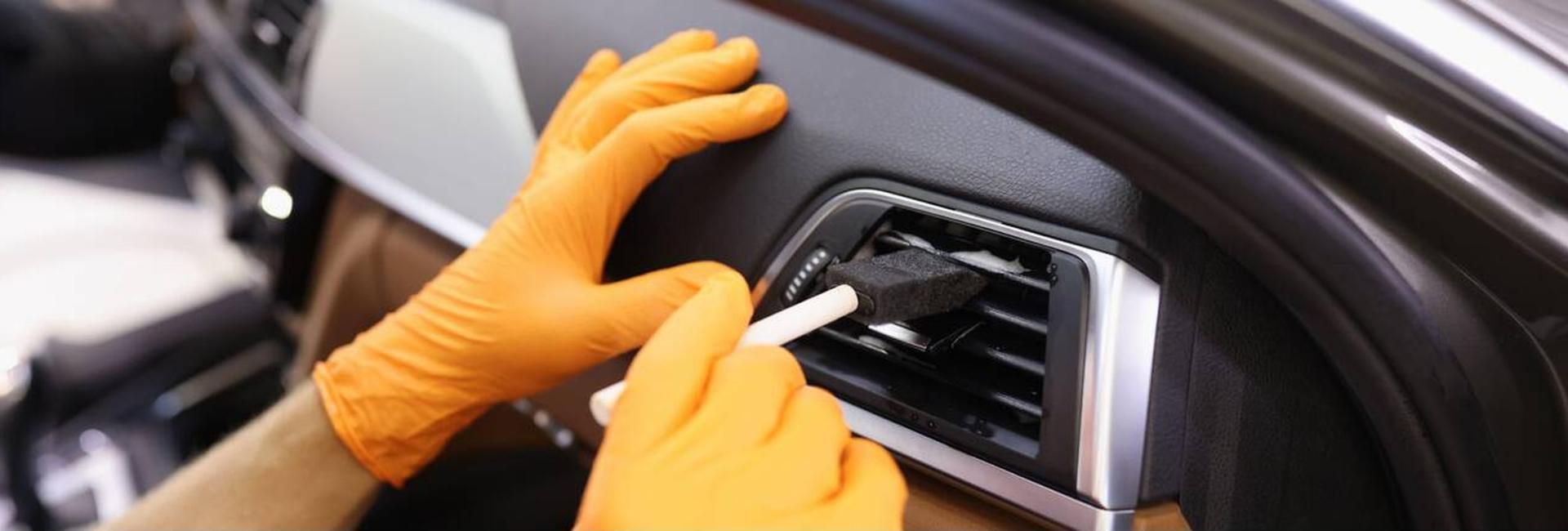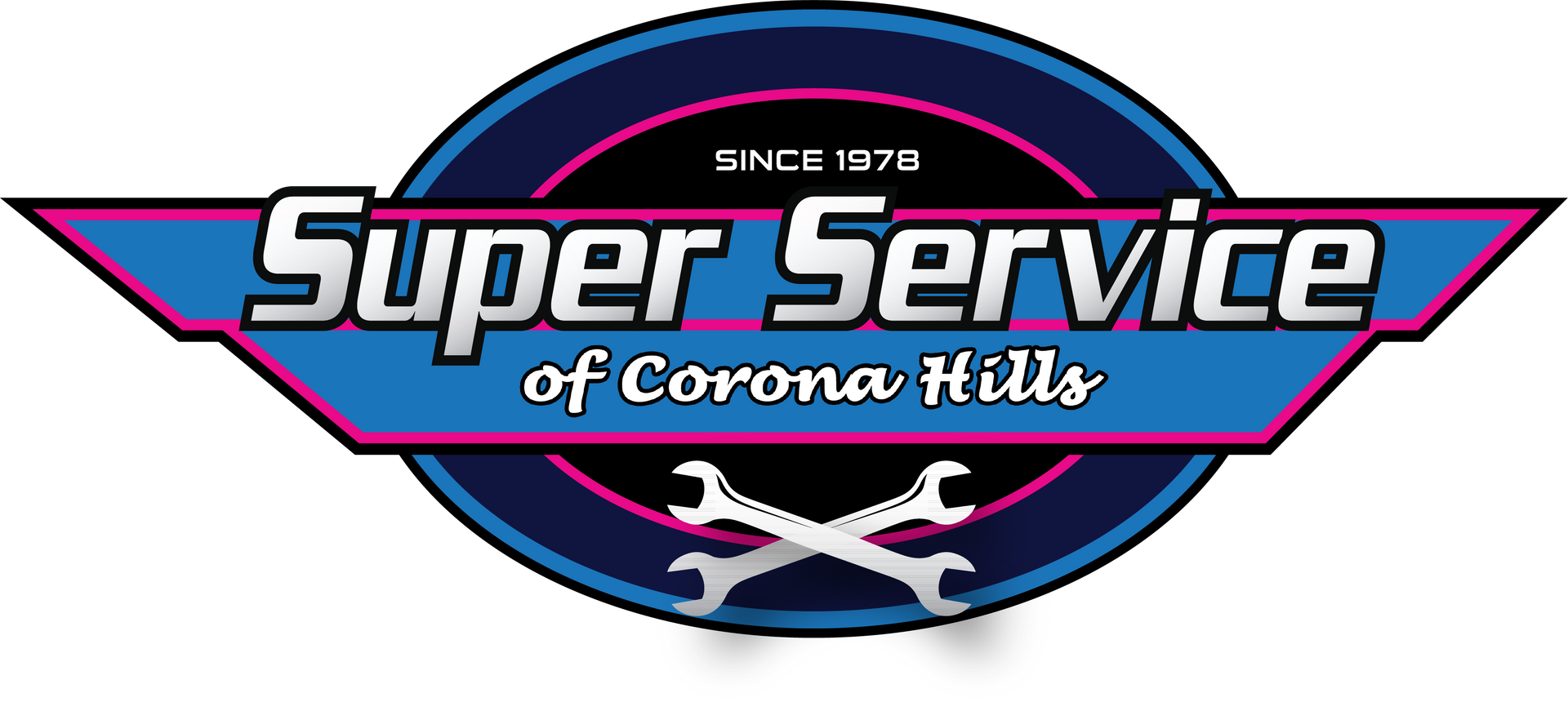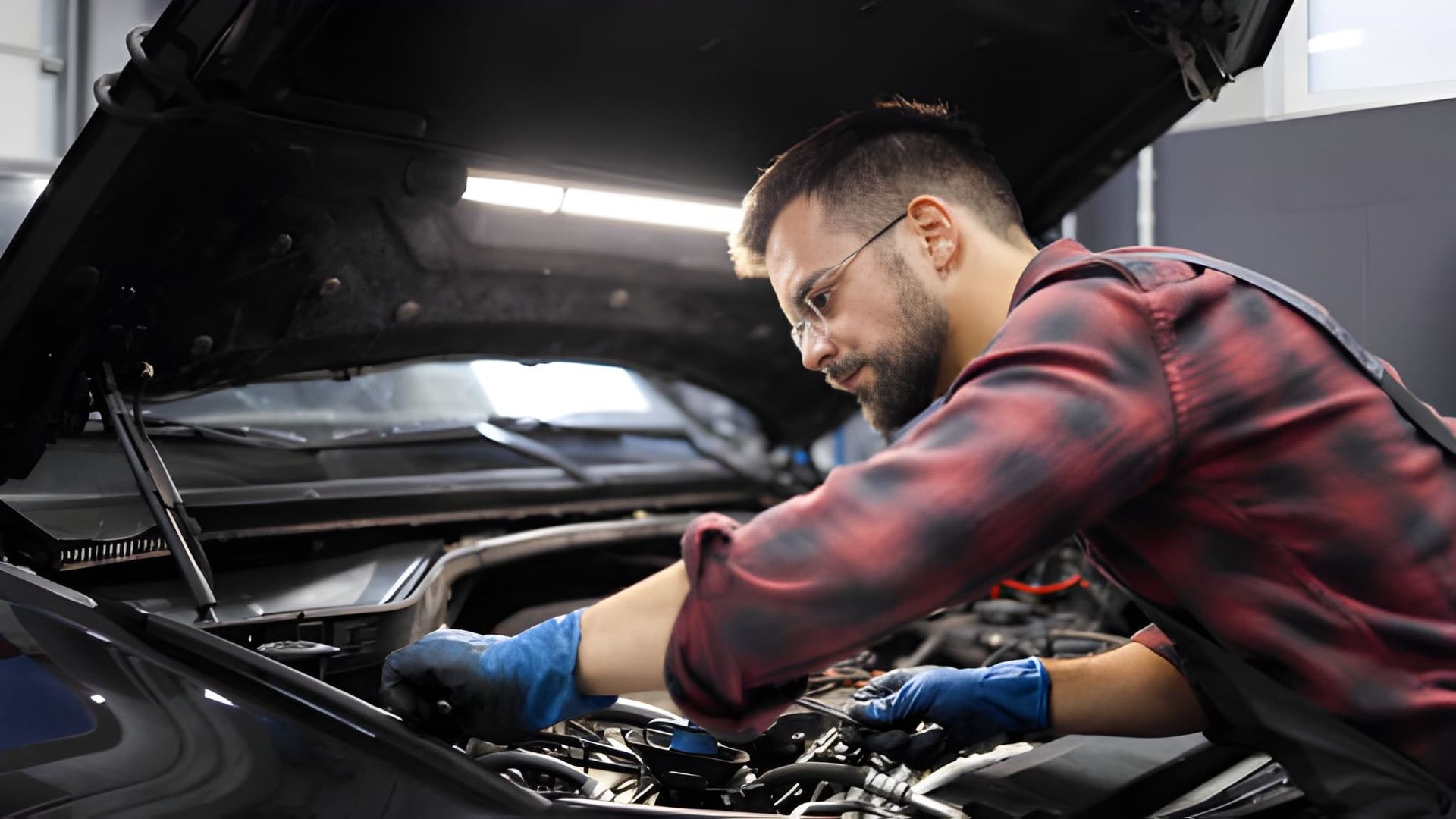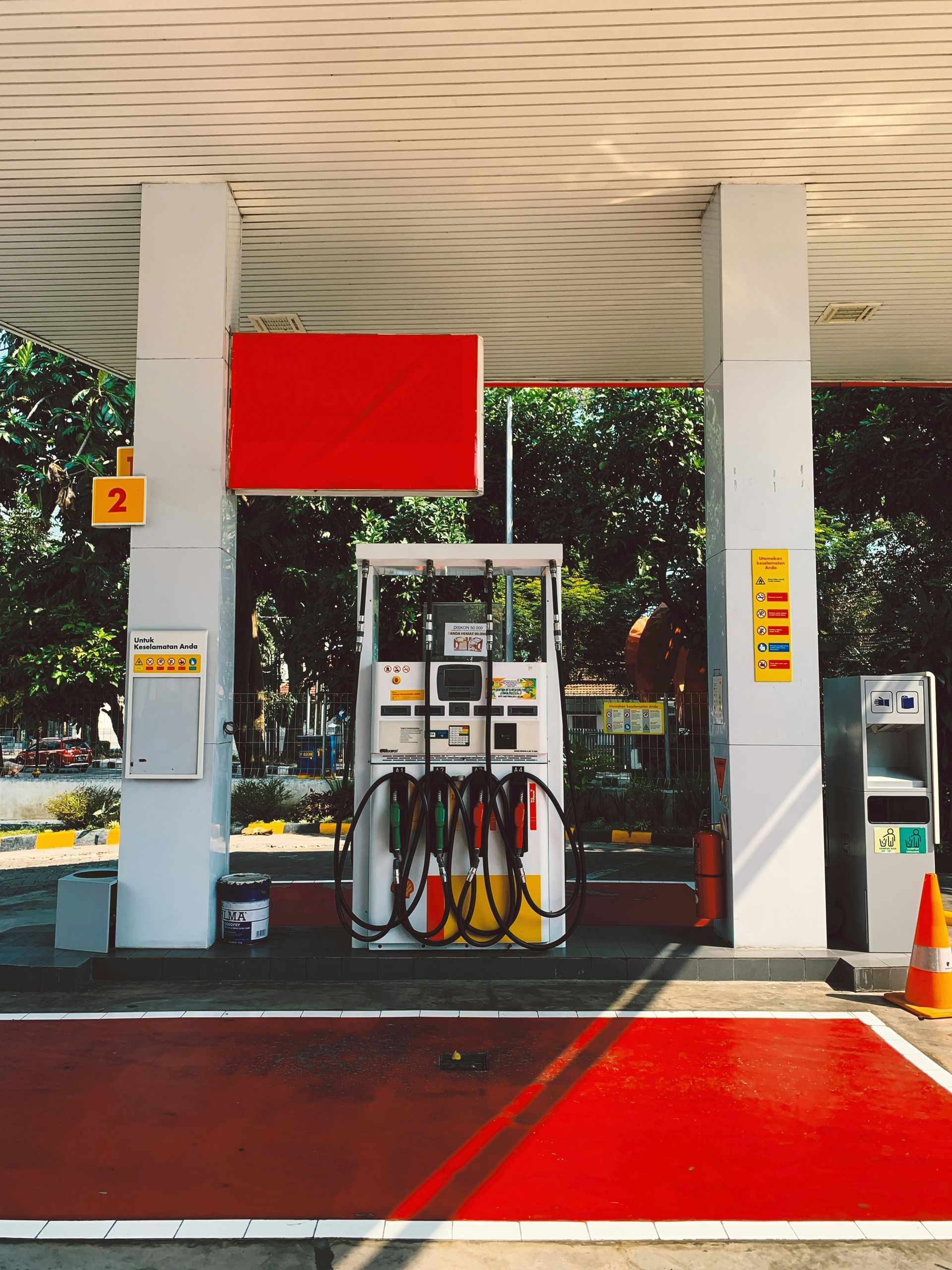Transmission Problems: What to Watch Out For
Bob Cornwall • May 13, 2025
Transmission Problems: What To Watch Out For
Transmission problems can sneak up on you, and if you’re not paying attention, they can lead to some serious headaches. Knowing what to look for can save you time and money. In this article, we’ll go over common warning signs, causes of failure, and how to keep your transmission in good shape. Let’s dive into the details of transmission problems: what to watch out for and how to address them.
Key Takeaways
* Watch for signs like difficulty shifting gears, burning smells, and fluid leaks.
* Transmission failure can stem from wear, overheating, or dirty fluid.
* Regular maintenance, like fluid checks and proper shifting, can prevent issues.
* Don't ignore small problems; they can lead to bigger, costlier repairs.
* Get a professional diagnosis to avoid further damage and ensure effective repairs.
Warning Signs Of Transmission Problems
Okay, so you think something might be up with your transmission? It's good to be aware of the signs. Catching things early can save you a ton of money and stress down the road. Here's what to look out for:
Difficulty Shifting Gears
If your car is having a hard time switching gears, that's a big red flag. Maybe it's refusing to switch, or it feels really rough when it does. This could be due to low or incorrect transmission fluid. It's like the car is struggling to find the right gear, and it's definitely not a good sign.
Burning Smell
That burning smell? Yeah, that's not normal. If you catch a whiff of something burning, especially after driving for a bit, it could mean your transmission is overheating. Overheating can happen if the transmission fluid is old or low, and it's burning up. Get that checked out ASAP.
Leaking Fluid
Spotting a reddish fluid under your car? That's likely transmission fluid. Leaking transmission fluid is a pretty clear sign that something's not sealed properly. Transmission fluid is important for keeping everything lubricated, and if it's leaking, things can go south pretty quickly.
Ignoring these early warning signs can lead to bigger, more expensive problems. It's always better to get things checked out sooner rather than later. A small issue now could turn into a major repair if you wait too long.
Causes Of Transmission Failure
Transmission problems can be a real headache, and understanding what causes them is half the battle. It's not always obvious, but usually, it boils down to a few key things. Let's break it down.
Wear And Tear
Just like anything else, transmissions wear out over time. All those gears, clutches, and bands are constantly working, and eventually, they're going to need some attention. It's kind of like how your favorite pair of shoes eventually gets holes. Regular use takes its toll. Think of it this way:
* Clutch plates wear down.
* Gears can chip or break.
* Seals start to leak.
It's a gradual process, but ignoring the early signs of wear can lead to bigger, more expensive problems down the road. Keeping up with maintenance can really extend the life of your transmission.
Overheating Issues
Overheating is a major killer of transmissions. Heat breaks down the transmission fluid, which then can't do its job of lubricating and cooling the parts. This can happen for a few reasons:
* Towing heavy loads.
* Driving in stop-and-go traffic.
* Low fluid levels.
Think of your transmission fluid as the lifeblood of the system. If it gets too hot, it's like running a marathon without water – things are going to break down fast. You might want to check out transmission overheating causes to learn more.
Fluid Contamination
Dirty or contaminated transmission fluid is another big problem. The fluid is supposed to be clean and free of debris, but over time, it can get gunked up with metal shavings, dirt, and other contaminants. This stuff acts like sandpaper, wearing down the internal parts of the transmission. Here's what can happen:
* Reduced lubrication.
* Clogged filters.
* Damaged components.
Contaminant Effect on Transmission Prevention
Metal Shavings Abrasive wear Regular fluid changes
Dirt Clogged filters, reduced fluid flow Proper sealing, filter maintenance
Water Corrosion, reduced lubrication Seal maintenance, avoid flooding
It's like having sand in your engine – not good. Regular fluid checks are super important to keep things running smoothly.
Preventative Maintenance To Avoid Transmission Problems

It's easy to forget about your transmission until something goes wrong, but a little preventative maintenance can save you a lot of headaches (and money!) down the road. Think of it like this: a little effort now can prevent a major breakdown later. I've learned this the hard way, trust me. Here's what I try to do to keep my transmission happy.
Regular Fluid Checks

It's easy to think that a little hiccup with your transmission isn't a big deal. Maybe it's a slight delay when shifting, or a noise you only hear sometimes. But ignoring these small signs can lead to much bigger problems down the road. Addressing minor transmission issues promptly can save you a lot of money and stress in the long run.
Escalation Of Problems
Think of it like a small leak in your roof. If you don't fix it, the water will eventually cause major damage to the structure of your house. The same goes for your transmission. A minor issue, like a worn-out seal, can quickly lead to fluid leaks, which then cause overheating and damage to internal components. Before you know it, you're facing a complete transmission failure.
Impact On Vehicle Performance
Even small transmission problems can affect how your car drives. You might notice:
* Reduced fuel efficiency
* Sluggish acceleration
* Rough shifting
Repairing And Fixing Transmission Issues
So, the transmission is acting up. What now? Well, once you've figured out what's wrong, it's time to get it fixed. The approach really depends on how bad the problem is. Sometimes it's a simple fix, other times, not so much.
Common Repair Techniques
For minor issues, you might be looking at things like:
* Replacing solenoids. These little guys control fluid flow, and when they go bad, shifting gets wonky.
* Fixing leaks. A simple reseal can do the trick.
* Adjusting the bands. This is more for older transmissions, but sometimes they just need a little tweak.
For more serious problems, it gets a bit more involved. Rebuilding a transmission means taking it apart, cleaning everything, replacing worn parts, and putting it back together. It's a pretty labor-intensive job.
Cost Considerations
Okay, let's talk money. Transmission work isn't cheap. Here's a rough idea of what you might be looking at:
Keep in mind that these are just estimates, and the actual cost can vary depending on the make and model of your car, the shop you go to, and the specific problem. Always get a few quotes before you commit to anything.
Repair Type Estimated Cost
Minor Repair (e.g., solenoid replacement) $200 - $800
Transmission Rebuild $1,500 - $4,000
New Transmission $3,000 - $8,000+
Remanufactured Transmission $1,500 - $5,000
Used Transmission $500 - $2,000
Don't forget to factor in labor costs, which can add a significant chunk to the bill. It's a good idea to ask for a detailed breakdown of the costs before you give the go-ahead.
The Cost Of Ignoring Transmission Problems
Ignoring transmission problems might seem like a way to save money now, but trust me, it's a classic case of being penny-wise and pound-foolish. What starts as a small hiccup can quickly snowball into a major catastrophe, leaving you with a repair bill that'll make your eyes water. It's like ignoring that leaky faucet – eventually, you'll have a flooded bathroom.
Potential Repair Costs
Let's talk numbers. A minor transmission issue, like a slipping gear, might cost a few hundred dollars to fix if caught early. But if you keep driving on it, hoping it'll magically disappear (spoiler alert: it won't), you're looking at potentially needing a complete transmission rebuild or replacement. We're talking thousands of dollars here. Think of it as paying for transmission maintenance now versus footing a bill that could rival a down payment on a new car later. Here's a quick breakdown:
* Minor Issue (e.g., fluid leak): $200 - $500
* Moderate Issue (e.g., slipping gears): $800 - $1,500
* Major Issue (e.g., complete failure): $2,000 - $5,000+
Impact On Other Components
Your transmission doesn't exist in a vacuum. When it starts acting up, it can put stress on other parts of your car. For example, a failing transmission can cause the engine to work harder, leading to increased fuel consumption and potential engine damage. It's like a domino effect – one problem leads to another, and before you know it, your entire vehicle is suffering. Plus, driving with a bad transmission can be dangerous, affecting your car's ability to accelerate or stop properly.
Long-Term Financial Implications
Beyond the immediate repair costs, ignoring transmission problems can have long-term financial consequences. A car with a history of neglected maintenance is going to depreciate faster. When it comes time to sell or trade it in, you'll get significantly less money for it. Plus, you'll be dealing with the stress and inconvenience of frequent breakdowns and repairs. It's better to address the issue head-on and protect your investment in the long run.
Think of your car's transmission like your own health. Ignoring early warning signs, like that persistent cough or ache, can lead to serious health problems down the road. Regular check-ups and preventative care are always cheaper and less painful than dealing with a major illness. The same goes for your car – take care of it, and it'll take care of you.
Wrapping It Up
So, there you have it. Transmission issues can sneak up on you if you're not paying attention. Keep an eye out for those warning signs like weird noises or slipping gears. Don't wait until it's too late—get those problems checked out early. Regular maintenance can save you a ton of cash and hassle down the road. If you notice anything off, don’t hesitate to reach out to a professional. It’s better to be safe than sorry when it comes to your car's transmission. Stay proactive, and your vehicle will thank you!

Even though we’re not dealing with snow-covered highways or icy conditions here in Corona Hills, winter still brings unique challenges for your vehicle. Shorter days, colder mornings, holiday travel, and seasonal rains all affect how your car performs—and how safe it is. At Super Service of Corona Hills, we know that preparing your vehicle for the months ahead is about more than just peace of mind it’s about preventing breakdowns and keeping you and your passengers safe. Let’s walk through the most important steps to getting your car winter-ready, even in sunny Southern California. Why winter still matters in SoCal People often assume winter car prep is only for places with snow and salt on the roads. But here in Corona Hills, winter conditions come in other forms: Cooler mornings can expose weak batteries and low tire pressure More rain means worn wipers and poor tire tread become real safety risks Holiday driving adds more miles, heavier loads, and more stop-and-go traffic Shorter days make proper lighting and visibility systems more important than ever All of this can take a toll especially if your vehicle hasn’t had a recent inspection. The essential winter prep checklist 1:- Battery and Starting System Cold temps slow chemical reactions in your battery, meaning even a slightly weak battery can struggle to start your car. If your battery is older than 3 years, it’s smart to have it tested now. 2:- Tire Health and Air Pressure As air temps drop, so does your tire pressure. Underinflated tires wear out faster and reduce traction especially dangerous on wet roads. We’ll inspect tread depth, tire condition, and pressure. 3:- Windshield Wipers and Washer Fluid Rain isn’t constant here, but when it hits, visibility matters. If your wipers are streaking or making noise, or your washer fluid is low, it’s time for a quick refresh. 4:- Brake Inspection With holiday traffic and slick roads, your brakes need to be 100%. We check pads, rotors, and brake fluid to ensure everything is performing exactly how it should. 5:-Fluids, Belts, and Hoses Engine oil, coolant, transmission fluid, power steering, brake fluid—each plays a role in cold-weather performance. Belts and hoses can become brittle over time and should be inspected for wear or cracking. 6:-Lights, Defrosters, and HVAC Visibility is key in winter. Make sure your headlights, brake lights, and interior defrost systems are working properly. If you haven’t used your heater or defroster in months, now’s the time to test them. 7:- Cabin Air Filter and Comfort Systems With windows rolled up more often in winter, a clean cabin air filter makes a big difference. It keeps the air inside the car fresh and improves heater and defroster performance. Bonus: Prepare for holiday travel Planning a road trip this December? Make sure your vehicle can handle the extra mileage. It’s also smart to carry a small emergency kit: flashlight, jumper cables, first-aid items, and water. And always check your spare tire and jack—just in case. Why choose Super Service of Corona Hills? We’re not just another repair shop—we’re your neighbors. Our ASE-certified technicians treat your car like it’s their own. And with our digital vehicle inspections, you’ll see photos and videos of exactly what we’re seeing—so you can make confident decisions without the guesswork. When you bring your vehicle in, we’ll make sure it’s fully prepped for the season. We back our work with a 3-year/36,000-mile nationwide warranty, and our friendly team is always here to answer your questions without the pressure. Conclusion Winter may not come with snow in Corona Hills, but your car still feels the change. From batteries to brakes to visibility systems, taking an hour to prep your vehicle now could save you from a roadside headache later. At Super Service of Corona Hills, we’re here to make sure you’re ready for whatever the season throws your way. Schedule your winter inspection today:👉 Book your appointment here Wishing you a safe, smooth, and stress-free holiday season—on the road and off.
Get professional tire repair at Super Service of Corona Hills, CA. Our dedicated technicians ensure your ride is safe and smooth. Schedule an appointment today!

Introduction As the weather starts to cool and the days grow shorter, your car begins to feel the change, too. The shift in temperature, increased moisture, falling leaves, and darker evenings all create new challenges for your vehicle, whether you're commuting daily or planning weekend getaways. Now is the perfect time to schedule a seasonal vehicle inspection. At Super Service of Corona Hills, we believe the best way to avoid surprise breakdowns and expensive repairs is simple: routine maintenance, done at the right time. Let’s talk about what your car needs during the fall season and how our team can help you stay ahead of the weather and the wear. Why Seasonal Maintenance Matters Right Now The transition from summer to cooler months puts extra stress on your vehicle in ways many drivers don’t expect. It's not just about winter, it’s about what’s happening right now: Changing Temperatures = Fluid Fluctuations As the temperature cools, your car’s fluids — like engine oil, coolant, and brake fluid — thicken or shift in performance. It’s important to make sure your levels are topped off and that the fluids are still in good condition. Tire Pressure Drops Naturally When the air gets cooler, your tire pressure drops. That can lead to under-inflated tires, poor fuel economy, and increased risk of blowouts, especially if you’re driving on worn treads. Battery Stress Increases Battery life can be impacted by seasonal changes. After enduring summer heat, your battery may be weaker than you think, and with colder mornings around the corner, it might struggle to start your engine. Poor Visibility Conditions Shorter days and unpredictable weather mean you’re likely driving more in the dark or during wet conditions. Functional headlights, brake lights, and windshield wipers become essential for visibility and safety. Brake & Suspension Systems Are Tested More Wet roads and leaf-covered streets can reduce traction, meaning your brakes and suspension need to be in top shape to keep you safe. Any delay in stopping or uneven handling becomes more dangerous this time of year. Heating & Defrosting Systems Are Essential Your HVAC system isn’t just about comfort — it’s about safety too. A failing heater or defroster can make driving uncomfortable and even dangerous if your windshield fogs up with no way to clear it. What We Check in a Fall Vehicle Inspection At Super Service of Corona Hills, our comprehensive seasonal inspection is designed to prepare your vehicle for the months ahead. We look at all the systems most affected by this seasonal shift: Battery: We test your battery's health and charging capacity so you won’t be surprised by a dead battery on a chilly morning. Tires: We inspect tread depth, check for uneven wear, and adjust pressure based on seasonal recommendations. Brakes: We examine your pads, rotors, and brake fluid to ensure responsive, reliable braking. Fluids: From oil and coolant to power steering and transmission fluid, we ensure all levels are correct and that the fluids themselves are clean and effective. HVAC & Defrost: We test your climate control system, defrosters, and air filters for comfort and safety. Windshield Wipers & Washer System: We replace worn blades and ensure your washer fluid is ready for rainy days. Lights: Headlights, brake lights, turn signals — everything gets tested to make sure you’re seen, and can see clearly. Belts & Hoses: Cracks, leaks, and signs of wear get spotted before they turn into breakdowns. Suspension & Steering: We check for worn shocks, struts, and bushings to ensure a smooth, safe ride. Why Now Is the Best Time for This Inspection When you take care of your car before the season takes a toll, you: Prevent costly breakdowns caused by overlooked wear or fluid failure. Stay safe with better visibility, braking, and handling in unpredictable weather. Boost fuel efficiency with properly inflated tires and clean filters. Extend your car’s life by staying on top of minor issues before they become major ones. Drive with peace of mind, knowing you’re ready for anything the season throws your way. The Super Service Advantage We know car maintenance can be inconvenient, which is why we work hard to make it easy. Here’s what you can expect when you visit Super Service of Corona Hills: Digital Vehicle Inspections: With photos and videos, you’ll see exactly what’s happening under your hood. No pressure, just facts. Free Pick-Up & Drop-Off: Can’t make it in? No problem. We’ll come get your vehicle and bring it back when it’s ready. Loaner Vehicles Available: So your day doesn’t skip a beat. Expert Technicians: Our ASE-certified techs know their stuff and work with honesty and precision. 3-Year / 36,000-Mile Warranty: Nationwide coverage on qualifying parts and repairs. Friendly Service: We’re not just here to fix cars, we’re here to help people. Conclusion The weather is changing, and your car needs to change with it. A seasonal inspection isn’t just smart, it’s essential. It’s your best defense against breakdowns, unsafe driving conditions, and expensive surprises. At Super Service of Corona Hills, we’re here to help you transition into the new season with total confidence. Whether you're commuting locally or heading out on fall road trips, your vehicle deserves the best care, and so do you. 📅 Ready to book your seasonal inspection? https://www.superserviceofcoronahills.com/
Ensure safe driving with expert wheel alignment in Corona Hills at Super Service of Corona Hills. Maximizing tire life & improving fuel efficiency. Visit us today!

Introduction: School is back in session, traffic on McKinley Street crawls, and Corona Hills mornings begin to crisp. With every stop sign you roll up to, one system quietly holds your family’s safety in its grip: your brakes. During September’s back-to-school surge, those calipers and pads move from supporting players to front-line heroes, especially when a distracted driver cuts in or a soccer ball bounces into the street. Yet most drivers only think about brakes when they squeal, grind, or trigger a dashboard light. By then, damage had already started. This month, Super Service of Corona Hills is shining a headlight on preventive brake care because the best emergency stop is the one you never notice. The Hidden Cost of Ignoring Brake Wear While modern braking systems are designed to be robust, they are not maintenance-free. The National Highway Traffic Safety Administration (NHTSA) estimates that approximately 25% of car crashes related to mechanical failure are due to brake issues. Even more striking, many of these incidents could be avoided with regular inspections and routine servicing. Ignoring brake maintenance can lead to: Warped rotors , which cause vibration and reduce control Metal-to-metal grinding , which results in expensive repairs Brake fade , where stopping power decreases after prolonged use, especially dangerous during downhill drives or emergency stops By catching wear early, you not only protect your wallet, you keep your loved ones safe. Physics in the Driver’s Seat: How Brakes Stop a Car When you press the brake pedal, a precisely engineered chain reaction begins: Hydraulic Pressure Brake fluid converts the mechanical force of your foot into hydraulic pressure, pushing fluid through the brake lines. Caliper Clamp This pressure moves pistons inside the brake caliper, pressing the pads against the spinning rotor. This contact creates friction, which slows the vehicle down. Heat Dissipation The motion energy of your moving vehicle is converted into heat. Vented rotors and composite pad materials work together to release that heat into the air quickly and safely. If any part of this sequence falters—such as air in the brake lines, worn pads, or warped rotors— your stopping distance increases dramatically . At 45 mph, just 20 extra feet could mean the difference between a safe stop and a costly accident. The Telltale Signs You Need a Brake Check Don’t wait until something “feels off.” Look and listen for these warning signs: Squealing or Grinding – Often the first warning from built-in wear indicators or metal-on-metal contact Steering Wheel Vibration When Braking – A sign of uneven rotors or pad deposits “Soft” or Spongy Pedal Feel – Could indicate air in the brake lines or deteriorated brake fluid Longer Stopping Distance – Often the result of pad glazing, low fluid, or caliper issues Dashboard Brake Light – A warning for everything from low fluid to ABS malfunctions Pro Tip: Brakes should be inspected at least every 12,000 miles or once a year—whichever comes first. Your Fall Brake Checklist September is your best opportunity to prepare for cooler weather and busier roads. Here’s what we inspect during a comprehensive brake evaluation : Measure Pad Thickness Pads below 3 mm are considered unsafe—replace them before they wear through. Inspect Rotor Surface We check for heat spots, glazing, rust, and warping. Resurfacing or replacing rotors ensures smooth, even braking. Brake Fluid Test & Flush Brake fluid attracts moisture over time, which reduces its effectiveness. We test it and flush if contamination is found. Caliper Performance Test Sticking calipers can cause uneven braking and tire wear. We inspect and lubricate all moving components. Brake Line & Hose Check Cracks or leaks in brake lines can cause dangerous pressure loss. We thoroughly inspect for wear and corrosion. ABS / Traction Control Diagnostic Your anti-lock system is essential in rainy or emergency braking situations. We perform a scan to catch sensor faults early. Road Test for Real-World Responsiveness We take your vehicle on a short test drive to simulate actual braking conditions—hot or cold, hard or gentle. A 45-minute inspection now can save thousands in repairs—and more importantly, ensure your safety when every second counts. Why Trust Super Service of Corona Hills? At Super Service, your safety is our top priority—and we don’t cut corners when it comes to brake repair. Here’s what sets us apart: Master ASE-Certified Technicians with years of experience in modern brake systems Digital Inspections complete with high-resolution photos and videos sent straight to your phone 3-Year / 36,000-Mile Nationwide Warranty on all brake work for your peace of mind Free Alignment Check with every visit Loaner Cars & Shuttle Service —we respect your time Transparent Pricing & Honest Recommendations —we educate, not up-sell Bonus Tips for Autumn Safety Fall driving in Southern California has its challenges. Use these seasonal tips to enhance your brake performance: Check Tire Pressure Weekly : Proper inflation ensures even stopping power Remove Excess Cargo : Every 100 lbs can add up to 10 ft of stopping distance Mind the Leaves : Wet leaves create slick conditions similar to ice, reduce speed, and leave extra space Use Engine Braking : On long downhill grades, shift into a lower gear to reduce reliance on brakes and prevent overheating Did you know? Even minor brake fade can reduce your stopping power by 30% , especially on downhill roads or during stop-and-go traffic. Conclusion: Corona Hills roads are getting busier, mornings are growing colder, and your schedule is more packed than ever. Don’t let worn brakes sneak up on you. With one visit, we can help ensure your car is ready for school zones, rain-slick roads, and unpredictable traffic. Schedule your comprehensive brake inspection today at www.superserviceofcoronahills.com and drive into fall with total confidence. Because when it comes to your safety, stopping power is everything.
Discover expert preventative maintenance tips from Super Service of Corona Hills in Corona Hills, CA. Ensure your vehicle's longevity. Visit us today!

By Super Service of Corona Hills Introduction: In Corona Hills, summer doesn’t just mean beach trips and BBQs—it means contending with triple-digit heat that turns your parked car into a rolling oven. By August, asphalt is shimmering, dashboards feel like griddles, and traffic on I-15 slows to a crawl beneath a blazing sun. That’s when an overworked A/C shows its first cracks. Every year, our team at Super Service of Corona Hills welcomes a parade of guests who thought their vents were fine until the cold air vanished. Vanessa, a long-time guest, learned this the hard way. Driving toward Hidden Valley Park, she cranked the dial, expecting frosty relief. Nothing. “Just hot air and panic,” she laughed when we saw her. Cases like Vanessa’s surge in late summer, because August heat acts as a stress test on every seal, hose, and compressor hiding behind your dash. How the Heat Wears Down Your A/C 1. High Ambient Temperatures When the outside air starts above 100°F, your A/C must pull those roasting molecules inside the evaporator, strip out the heat, and shove chilled air back through the cabin. The hotter the input, the harder every component must work. 2. Non-Stop Usage Family road trips, beach weekends at Corona del Mar, and late-night taco runs mean your A/C rarely gets a break. Continuous cycles accelerate refrigerant loss and push lubricants to their limits. 3. Component Fatigue Rubber O-rings that were “fine” in spring expand and contract each time you turn the system on, eventually cracking and leaking. Compressors spin thousands of additional revolutions every August commute, and condensers bombard road debris and insects on the 91 Freeway drives. Even a “minor” issue low refrigerant charge, a partially blocked condenser, or a sluggish blower motor can flip your vents from arctic to Sahara almost overnight. Prevention beats perspiration every time. Real-Life Rescue: Carlos’s Canyon Cruise Carlos rolled into our shop after a Friday night cruise through Temescal Canyon turned into a mobile sauna. “I felt like I was baking bread in my car,” he joked. Our ASE-certified techs performed a 60-point A/C diagnostic and found three culprits: Low refrigerant from a slow leak at a compressor seal A failing fan clutch that kept the condenser from shedding heat Clogged cabin air filter packed with canyon dust and pollen Within an hour we evacuated, recharged, replaced the faulty clutch, and slipped in a fresh filter. Carlos left with 38 °F air blasting from the center vents—and a reminder to schedule maintenance before the next canyon run. Your August A/C Survival Checklist Want to avoid a Carlos-style meltdown? Tick off these essentials before the next heat wave: Book a 60-Point A/C Inspection: compressor health, refrigerant level, pressure readings, and leak detection. Verify Refrigerant Charge: Even a 10 % loss can raise vent temps by 15°F. Replace the Cabin Air Filter: clean air improves airflow, cooling speed, and interior air quality. Clean the Condenser Fins: road grit reduces heat transfer; a gentle rinse restores efficiency. Listen for Odd Noises: squeals or rattles often signal bearing or clutch failure. Test Blower Speeds: Weak airflow on high setting may point to a failing motor or resistor. Inspect Belts & Hoses: heat-stressed rubber can crack and leak refrigerant. Spending a short hour in our shop now can save you from pricey compressor replacements—and days of sweaty driving later. Bonus Cool-Down Tips for Corona Hills Drivers Use a Sunshade & Crack the Windows: Lower cabin temps by 20°F before you even turn the key. Remote-Start if Equipped: Let the A/C begin cooling while you lock up the house. Tint Wisely: Legal ceramic tint blocks infrared heat, protecting your interior and A/C load. Park Smart: Shade under a tree at Santana Park beats direct sun in a parking lot any day. Why Choose Super Service of Corona Hills? Your comfort is our mission, and we back that promise with: Master ASE-Certified Technicians specializing in cutting-edge diagnostics and precision A/C repair Digital Inspections: photos and videos sent straight to your phone so you see what we see 3-Year/36,000-Mile Nationwide Warranty: peace of mind long after you leave the shop Free Alignment Check with every service, because cool rides should drive straight too Courtesy Shuttle & Loaner Cars: keep your schedule running even while we work on your ride Friendly, Transparent Service: no jargon, no up-selling, just honest answers and clear pricing Conclusion: Corona Hills heat is no joke, but you don’t have to sweat through it. A single proactive visit can ensure your A/C survives every scorcher August throws your way—whether you’re commuting to Riverside, cruising Dos Lagos, or exploring Skyline Drive. Ready to chill? Schedule your comprehensive A/C inspection today at www.superserviceofcoronahills.com and drive into the season with confidence, comfort, and ice-cold air on demand.
Expert tire repair in Corona Hills at Super Service of Corona Hills. Improve tire life and safety with our skilled services. Schedule an online appointment now.






